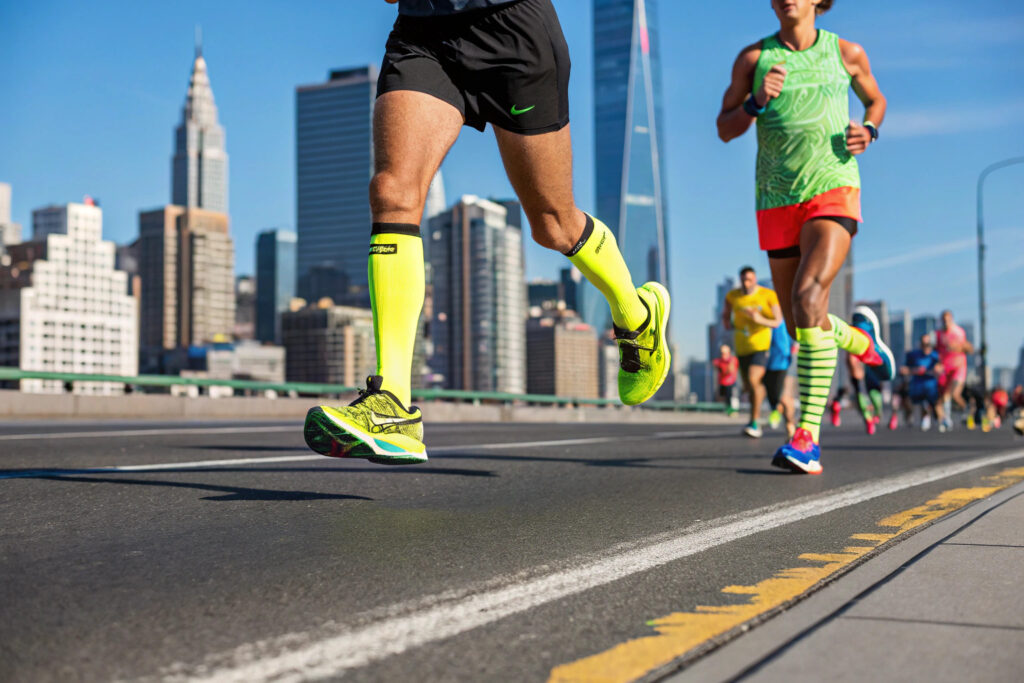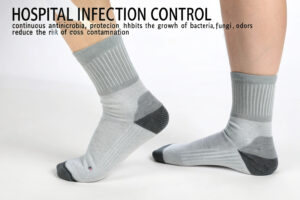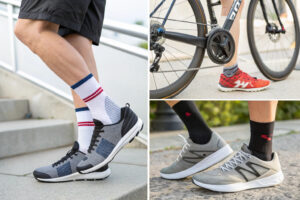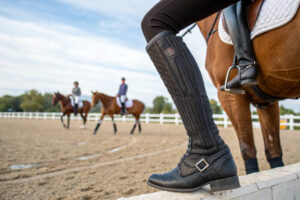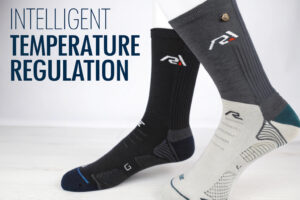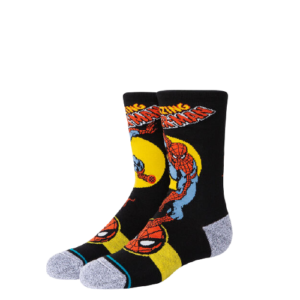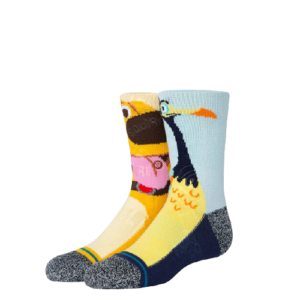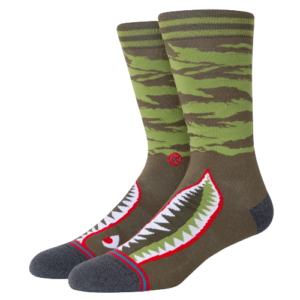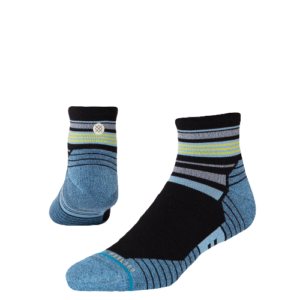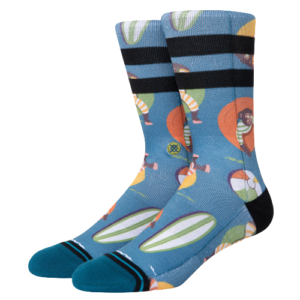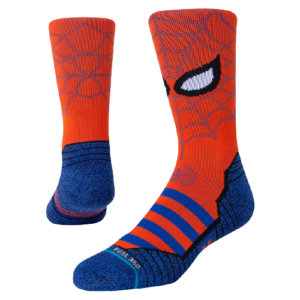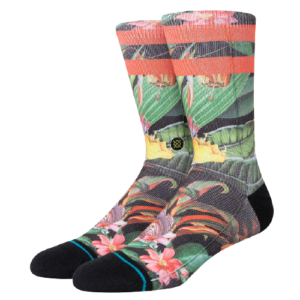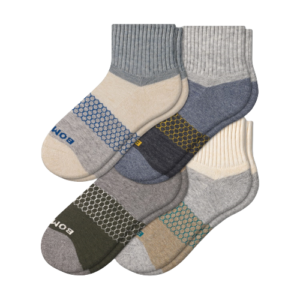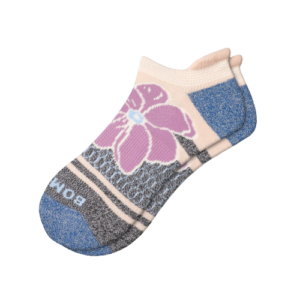Running a marathon is not only a test of endurance but also a challenge of preparation. While most runners focus on shoes, training plans, and nutrition, socks often remain the underestimated element that can make or break your race day. As someone who has worked with thousands of athletes through my sock manufacturing business, I have seen how the right pair of socks can mean the difference between finishing strong or limping over the finish line.
The best socks for marathon running combine comfort, performance, and protection. They reduce friction, manage moisture, and support your feet over 26.2 miles. Whether you are a first-time marathoner or a seasoned runner, investing in quality running socks is as important as choosing the right shoes.
When selecting the best marathon running socks, it’s not just about buying “sports socks.” It’s about matching performance features to your running style, climate, and foot shape. Below, I’ll share industry insights, tested materials, and design innovations that we produce for global athletic brands—information that could help you run farther, faster, and with fewer injuries.
How to Choose the Right Marathon Running Socks?
Choosing the right marathon running socks starts with understanding your running environment and your own feet. Your socks should complement your shoes, prevent blisters, and keep your feet dry and comfortable throughout the race.
You should look for socks that fit snugly without constricting, wick away sweat, and provide cushioning where you need it most. Avoid cotton, as it retains moisture and increases friction, which can lead to blisters. Instead, go for blends with synthetic fibers or natural performance yarns that dry quickly.
Different marathon terrains and climates require different sock features. For hot weather races, breathable and lightweight fabrics are best. For cold-weather runs, choose thermal and moisture-wicking combinations that keep your feet warm without overheating. And for mixed conditions, a balanced mid-weight sock can adapt to changing environments.
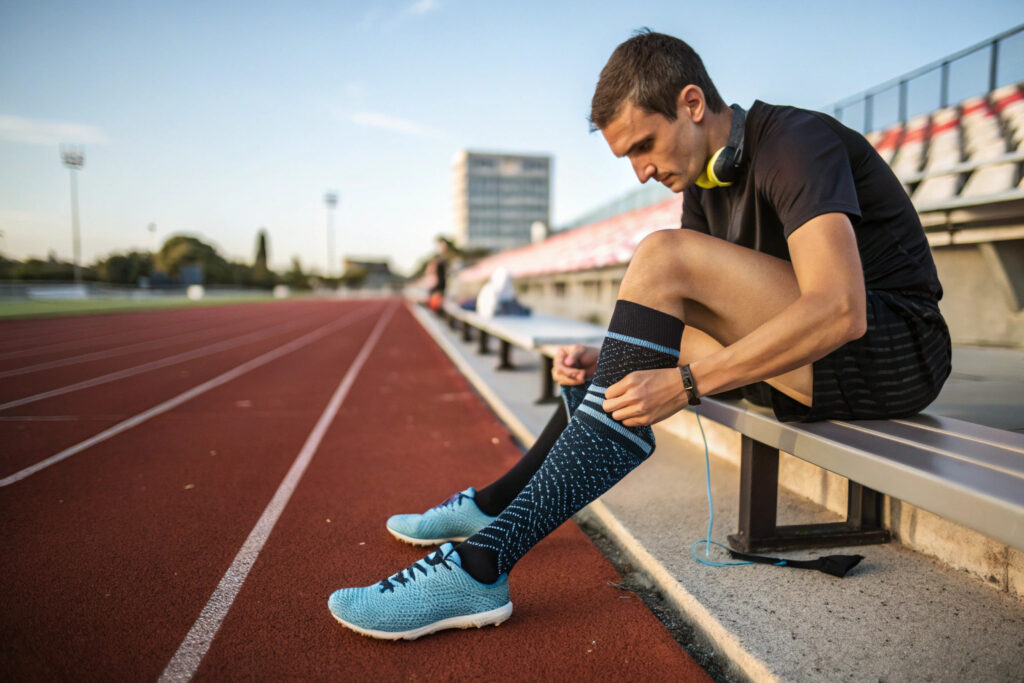
What Sock Thickness Works Best for Marathons?
Sock thickness affects comfort and temperature control. Thicker socks provide more cushioning but can trap heat, which may not be ideal in warmer races. Thinner socks improve breathability but may not offer enough shock absorption on harder pavements.
Many elite runners choose medium-thickness socks made of Coolmax® fibers or merino wool blends because they provide a good balance of cushioning and moisture management. If your shoes fit tightly, opt for thinner socks to avoid compression on your toes.
How Should Running Socks Fit to Prevent Issues?
Fit is crucial in preventing blisters and discomfort. Socks should have a secure heel cup, elastic arch support, and a smooth toe seam. A sock that moves inside your shoe will create friction, which is the main cause of blisters.
A high-quality pair, like those certified under OEKO-TEX® standards, will not only ensure comfort but also guarantee the absence of harmful chemicals. Always test your socks during long training runs before race day to ensure they match your shoes and running style.
Are Compression Socks Worth It for Long-Distance Running?
Compression socks have become popular in the marathon community for their potential to improve circulation and reduce muscle fatigue. As a manufacturer, I have seen an increase in demand from both amateur and elite runners for medical-grade compression socks tailored for sports.
Compression socks can help maintain blood flow, reduce swelling, and support faster recovery. They apply graduated pressure that is strongest at the ankle and gradually decreases toward the knee, which can aid venous return and decrease lactic acid buildup.
While scientific evidence on performance improvement varies, many runners report feeling fresher during the latter stages of a marathon when wearing compression socks. They are particularly useful for those prone to calf cramps or running in colder weather.

Do Compression Socks Improve Recovery?
Recovery is a crucial aspect of marathon performance, and compression socks can play a role. Studies from Journal of Strength and Conditioning Research suggest that wearing compression gear post-race may reduce muscle soreness and speed up recovery.
Some runners even wear them during flights after a race to prevent swelling. As part of our export line, we provide compression socks with antibacterial yarns that help maintain hygiene during extended wear.
Should You Wear Compression Socks During the Race?
Wearing compression socks during a marathon is a personal choice. For some, they offer extra muscle support; for others, they feel restrictive. If you decide to use them, test them in long training runs to ensure they don’t cause chafing.
In our factory, we use Lycra® fibers to ensure elasticity and durability, so the socks maintain compression levels even after multiple washes. We recommend knee-high designs for full calf support.
Best Fabrics for Breathability and Moisture Control
Fabric choice is one of the most important factors in sock performance. The right material will keep your feet dry, regulate temperature, and prevent odor—key for a long, grueling marathon.
The best marathon running socks use moisture-wicking, quick-drying fabrics that maintain breathability even in hot conditions. Popular choices include synthetic fibers like nylon and polyester blends, as well as natural fibers like merino wool and bamboo.
At our facility, we combine recycled polyester for sustainability, merino wool for temperature control, and spandex for stretch. This blend offers comfort without sacrificing durability, making it a favorite among our international sportswear clients.
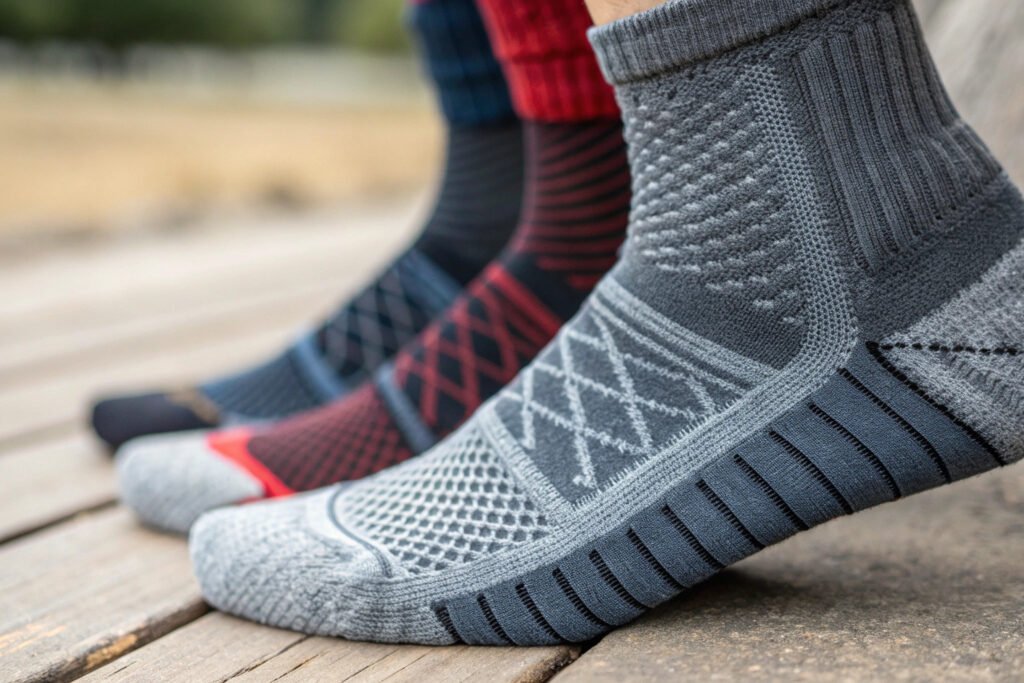
Why Is Merino Wool Good for Marathon Socks?
Merino wool is naturally breathable, moisture-wicking, and antibacterial. It helps regulate temperature in both hot and cold weather, making it a versatile choice for marathon runners.
Brands like Smartwool have built their reputation on merino wool’s ability to keep feet dry and blister-free. We source high-grade merino from ethical suppliers, ensuring both performance and sustainability.
Are Synthetic Fibers Better for Hot Weather?
Synthetic fibers like Coolmax® and polyester blends excel in hot, humid conditions. They wick sweat quickly and dry faster than most natural fibers.
For runners in tropical marathons, lightweight synthetics with mesh panels provide maximum ventilation. We also offer eco-friendly versions made from recycled PET bottles, which perform just as well while reducing environmental impact.
Key Design Features to Prevent Blisters and Discomfort
Beyond fabric, design details can make or break a marathon sock. The best designs reduce friction, cushion high-impact zones, and provide targeted support.
Look for seamless toes, cushioned soles, arch support, and reinforced heels. These features work together to protect your feet from repetitive stress over miles of running.
Our CNAS-certified lab tests every design for durability and comfort, ensuring they meet international athletic standards.
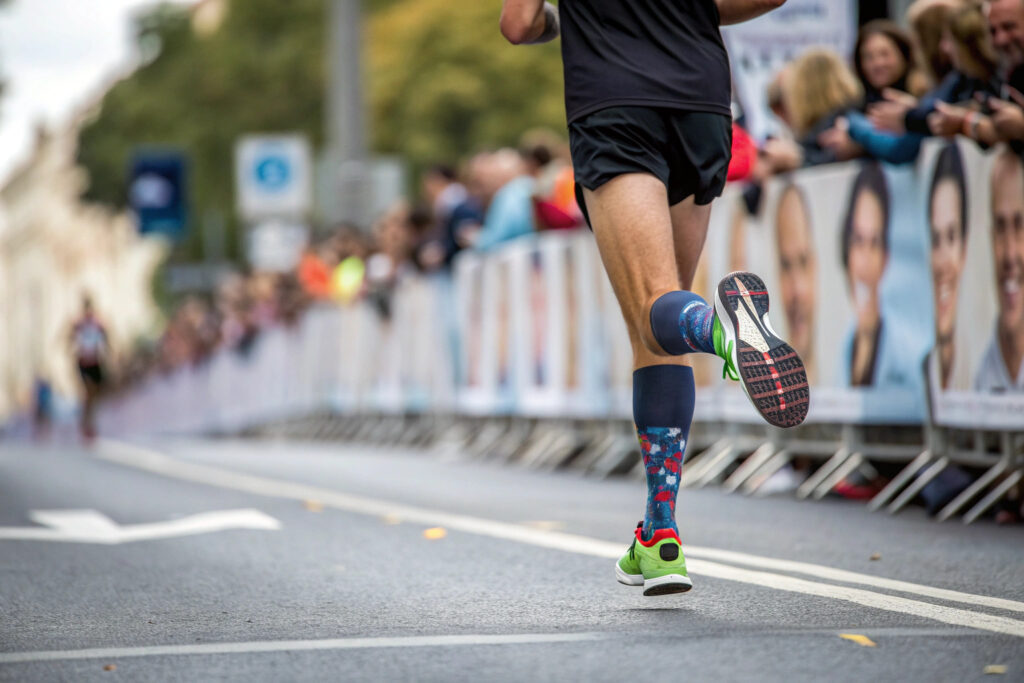
How Does Sock Construction Affect Performance?
Sock construction influences how well your feet handle the repetitive impact of a marathon. Flat-knit toes prevent pressure points, while cushioned soles absorb shock.
Our clients often request Y-stitched heels for better fit and antimicrobial finishes to prevent odor. Strategic padding also helps in reducing the risk of plantar fasciitis by providing arch stability.
Can Special Sock Designs Prevent Blisters?
Blisters are every runner’s nightmare. Double-layer socks, like those from Wrightsock, create a friction barrier, reducing the likelihood of skin irritation.
In our product line, we offer anti-slip silicone grips on the inside of the heel cup, which keeps socks in place even during intense runs. This innovation has been popular with both amateur and elite marathoners.
Conclusion
The best socks for running marathons are not a one-size-fits-all choice—they should match your running style, climate, and personal preferences. Whether you prefer lightweight synthetics for tropical races or merino wool blends for cooler climates, the goal is the same: comfort, support, and protection for the entire 26.2 miles.
If you are planning to produce your own branded high-performance running socks, we at Shanghai Fumao have the expertise, technology, and capacity to turn your ideas into reality. You can contact our Business Director, Elaine, at elaine@fumaoclothing.com to discuss custom designs, materials, and bulk production tailored to your market needs.

